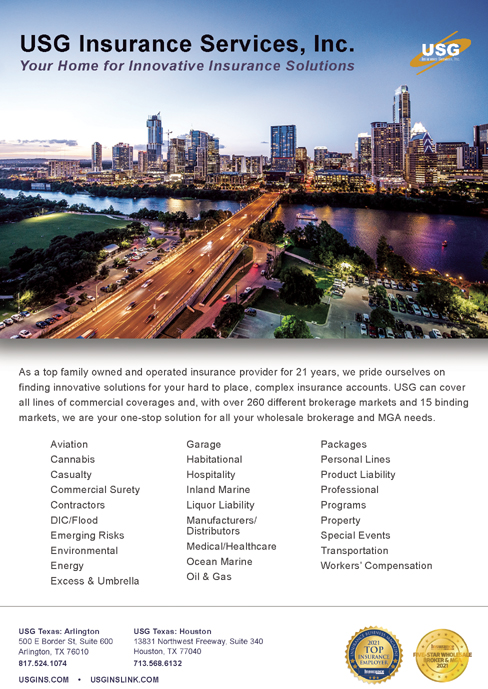On March 31, the board of directors of the Surplus Lines Stamping Office of Texas voted unanimously to retain the 0.075 percent stamping fee rate for 2023, a reduced rate that went into effect for all policies with inception dates after Jan. 1, 2021.
Nearly two years ago, the stamping office staff predicted that this reduced stamping fee would bring the amount of its unrestricted reserve fund into compliance with the Plan of Operation by 2034. At the March meeting, staff financial analyst Christian Robinson said the current stamping fee rate could accelerate the compliance date to as early as 2029, as operational expenses trend upward.

As of the end of 2021, the unrestricted fund balance was $28.8 million, or about $20 million more than what is allowed. The fund balance increased from year-end 2020, when the undesignated fund balance was $27.2 million.
Robinson pointed out that the trend line shown to the board in June 2020 included a brief rise in the fund balance before a decline would ensue. The predicted brief increase resulted from three primary factors: a three- to six-month lag period before almost all filings were made at the reduced rate; a lower than normal operating expense average due to some understaffing in prior years, and a continued rise in premium volume due to hard market conditions, said Robinson. Current conditions have SLTX operating at a loss and dipping into the unrestricted fund to meet operating expenses.
Robinson laid out three scenarios so the board could consider the effects of further reducing the stamping fee rate. All of the scenarios used the same rising trend line for the agency’s average operating expenses. Robinson said that the reduced staffing level of the past was not sustainable for the agency moving forward. He also acknowledged that a reduction in office space needs could reduce the agency’s expenses if work-from-home continued, as was proven doable during the pandemic adaptations. The current office lease ends in March 2023.
The first scenario was the revised trend line for the current rate of 0.075 percent that would allow the fund balance to be reduced to its legal maximum by 2029. The accelerated time line has to do with a rising expense trend, said Robinson. His analysis line graph has the maximum allowable unrestricted fund balance reaching $20 million around 2028. While the current rate edges to this maximum slowly, the 0.075 filing fee has the best long term sustainability, said Robinson. In the long run, Robinson predicted that the break-even rate is around 0.12 percent.
A rate reduction to 0.05 percent would allow the fund balance to reach its legal maximum in 2025, and would require an upward adjustment in the filing fee at that time in order to meet rising expenses.
A rate reduction to 0.03 percent would allow the fund balance to reach maximum in 2024; however, continuing the rate into 2026 would fully deplete the reserves. This aggressive reduction would “almost assuredly require a subsequent increase,” said Robinson, “likely soon.”
Rate changes mean significant costs to the industry and to the stamping office, as programing changes would be required, said Robinson. He noted other factors that could influence the surplus lines market, negatively impacting reported premium, thereby reducing filing fee collections: Future legislative changes could impact surplus lines premium volume, as could other political factors and market conditions. He noted that rate changes are attached to policy inception dates, so the true impact of a stamping fee rate change, up or down, is not felt for three to six months after the effective date of the change.
Robinson added that typically hard market conditions remain for only about two years, and this hard market cycle has already hit and surpassed that mark.
Robinson said that he used the agency’s current approved operating budget of $9.3 million as an indicator of the rising rolling average used to predict the future allowable limit of the unrestricted fund. The SLTX Plan of Operation requires that the maximum fund balance be no greater than two times the five-year average of audited operational expenses.
The adopted 2021 budget was $7.8 million; however, audited operating expenses for 2021 used to calculate the current allowable $8.8 million maximum unrestricted fund balance was $5.9 million, or 23.1 percent less than the budgeted operating expenses for the year.
The current 0.075 percent rate in Texas places it 10th among 13 states with surplus lines service offices where fees are percentage based. Two states with service offices, Pennsylvania and Oregon, have flat fees per policy. Among the largest premium volume states, Texas falls below California’s filing fee rate, which is 0.250 percent, and New York, at 0.170 percent. Florida’s filing fee is 0.060 percent.




Recent Comments